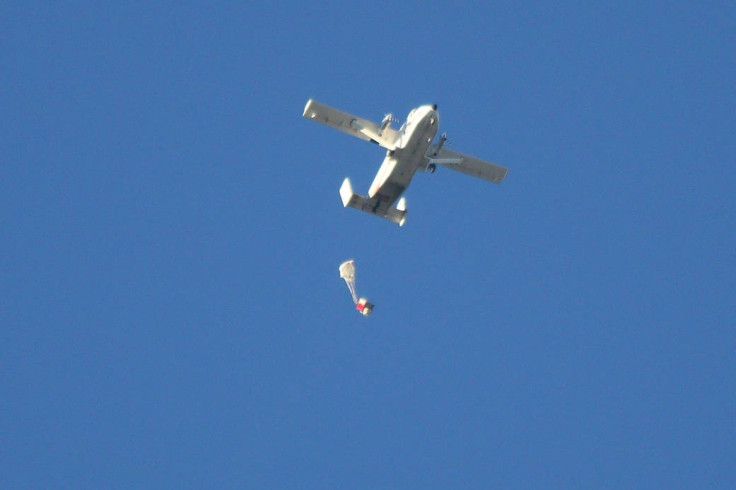Watch: Nasa drops Orion spacecraft replica from 35,000ft for parachute failure test
To simulate the failure, only two of the three parachutes bundled with the mock spacecraft were deployed.

Nasa dropped a replica of its Orion spacecraft from 35,000ft on Friday, 15 December, in a bid to test its ability to deal with a contingency like the failure of one of its parachutes during descent.
The space agency flew the replica on a C-17 US Air Force transport plane and the capsule was taken up to an altitude of 35,000ft. It was then dropped over US Army's Yuma Proving Ground in Arizona.
To simulate the failure of one of the parachutes, only two of the three parachutes bundled with the mock spacecraft were deployed. Despite that, the replica managed to land safely in the desert.
First, two small "drogue" chutes were deployed to stabilise the capsule falling under extreme aerodynamic pressure. Once the unit was stabilised part, the smaller chutes were cast off and two main parachutes were deployed to further cut down the descent speed and land the craft safely.
Though the capsule did not land where Nasa had originally planned it to, which was a plowed and levelled site, the test was seen as successful considering the fact that the craft sat perfectly upright upon landing and there was no critical damage.
"It went really well," said Nasa systems engineer Jim McMichael, according to the Associated Press (AP). "We got a little bit of a bounce. It just lands and digs a little bit of a hole and lands and sits in the desert."
The representative capsule used for the demonstration was quite similar to the Orion Multi-Purpose Crew Vehicle (Orion MPCV), which will take a crew of four on missions to Mars and beyond with the help of Nasa's massive SLS rocket. Its weight and width matched that of the original capsule, but the height was reduced to make sure that it fit inside the C-17 US Air Force transport plane.
This test, which was the fifth in a series of eight planned manoeuvres, was conducted after two unsuccessful attempts earlier this week. Nasa hopes to complete the remaining tests over the next year before moving towards the testing of Orion's Launch Abort System (LAS) in April, 2019.
LAS, as per Nasa, has been designed to take the astronauts sitting in the capsule to safety in case the rocket, which will produce a combined thrust of 8.8 million pounds at lift off, fails or explodes during ascent.





















